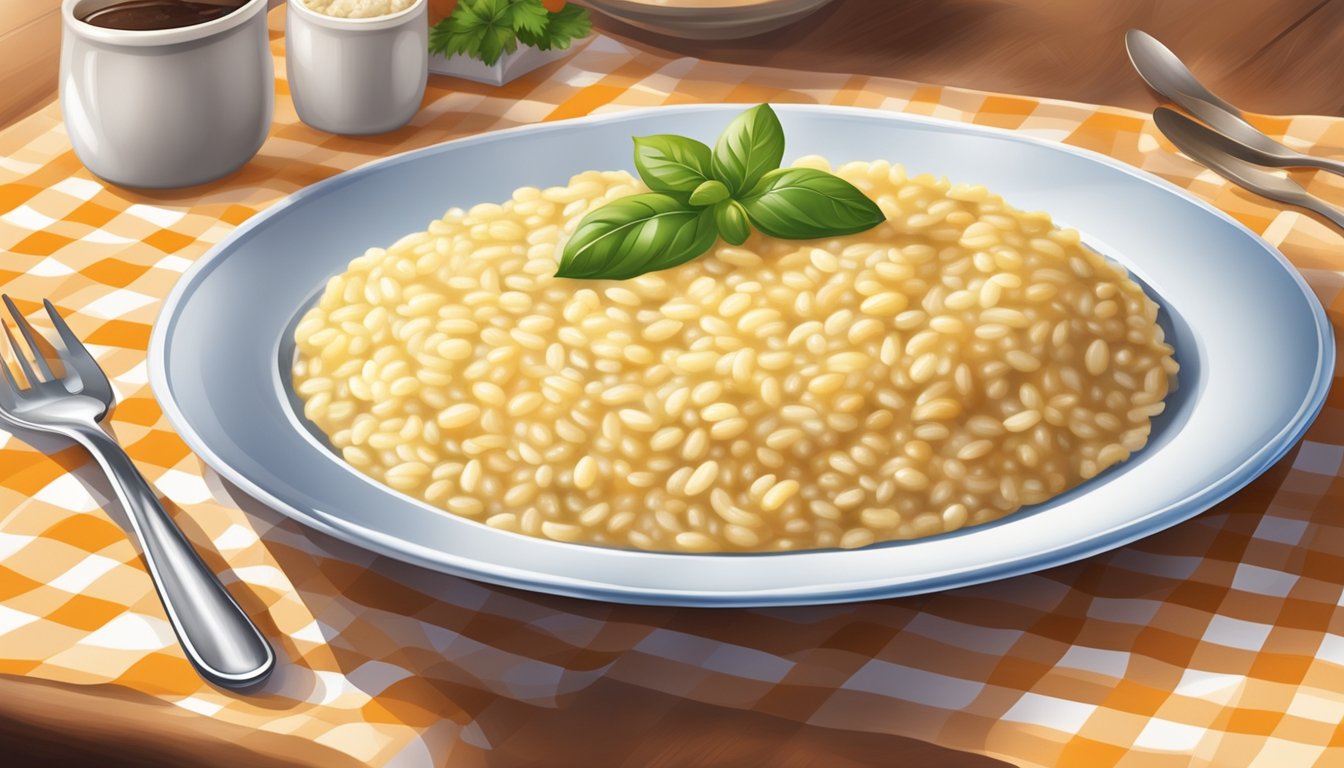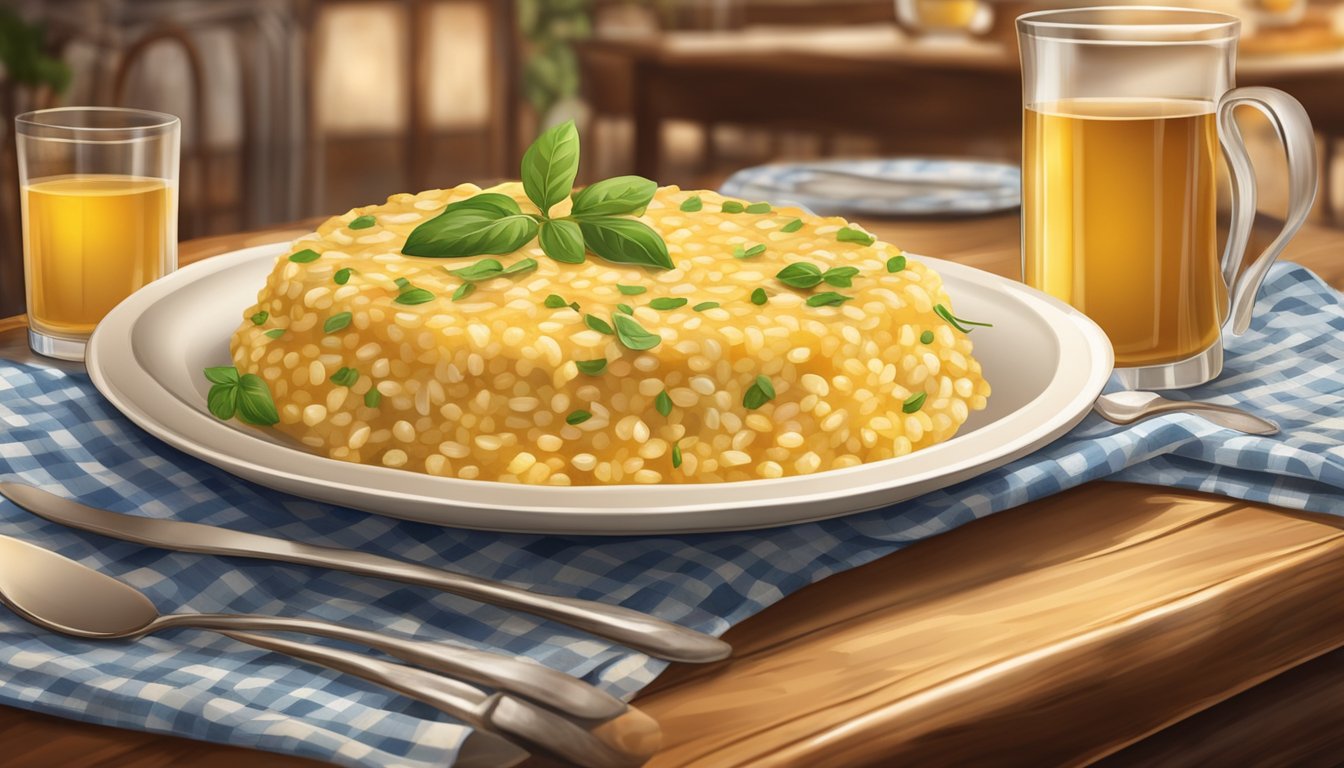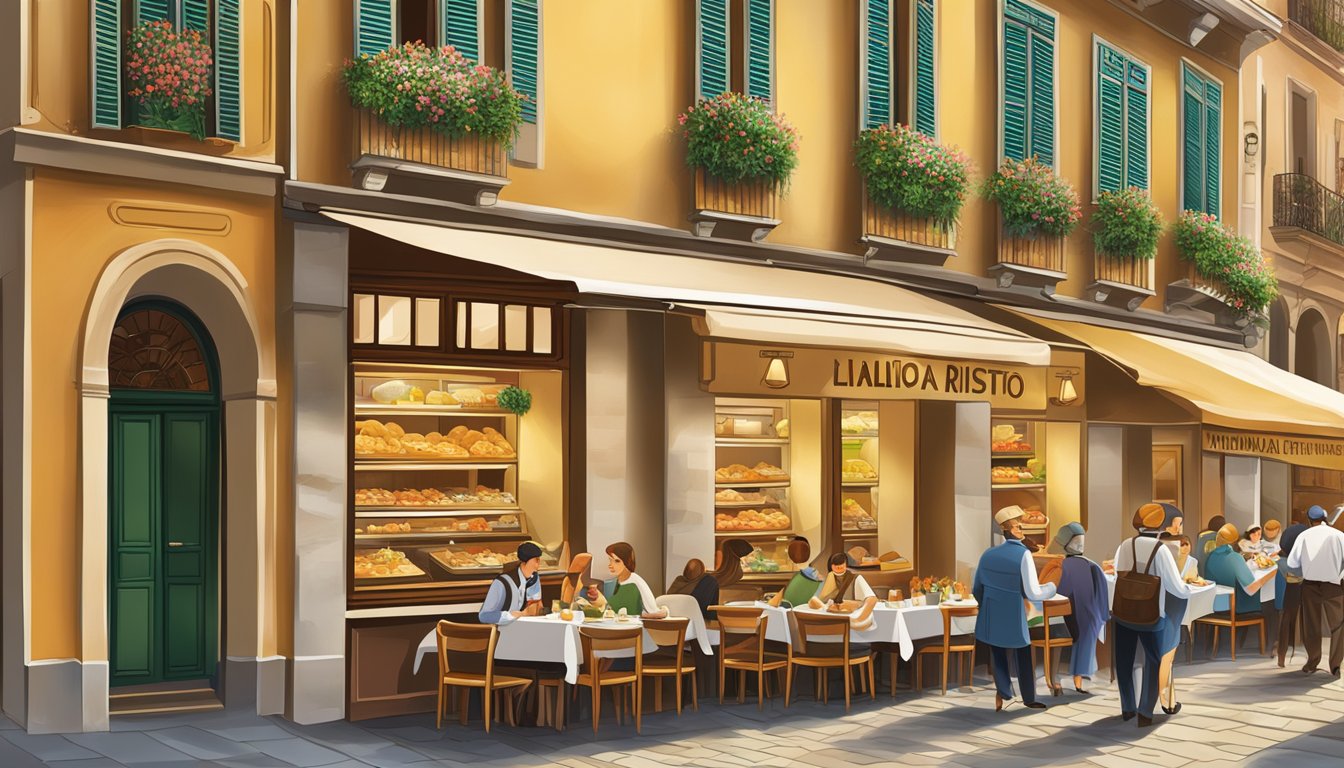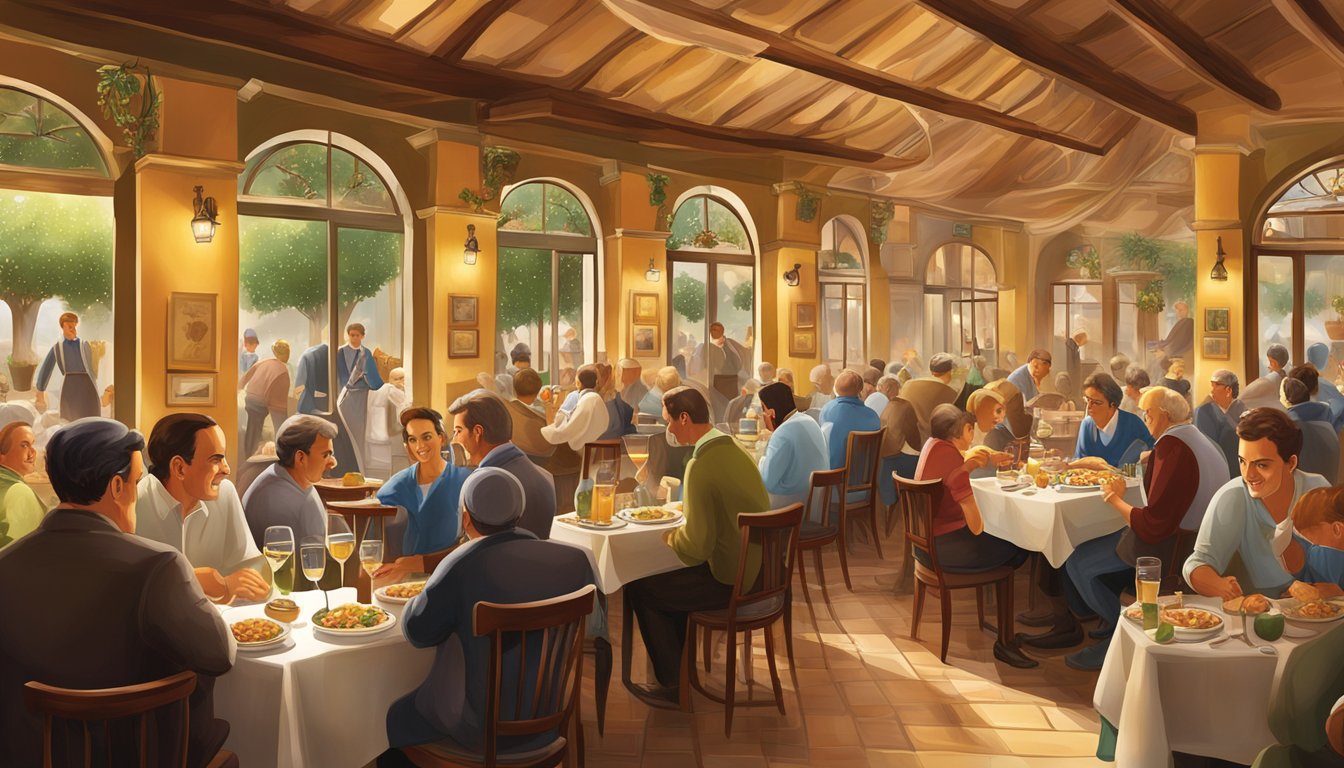Milan, a city renowned for its fashion and design, also offers an exquisite journey for the palate with its traditional Milanese cuisine. To truly experience the local flavors, one must visit the typical Milanese trattorias scattered throughout the city. These trattorias are not only about the food; they epitomize the rich history and culture of Milan. They serve as gateways to the past, offering dishes that have been enjoyed for generations. These eateries take pride in preserving the authenticity of Milanese classics, making them the perfect spots to savor the celebrated Milanese risotto.

This creamy, saffron-infused delight, known as “risotto alla Milanese,” is the cornerstone of local gastronomic tradition. When visiting these trattorias, one embarks on a culinary quest not only for the flavors of the saffron-laced rice but also for other locally revered dishes. With their warm ambiance and emphasis on regional recipes, traditional Milanese trattorias offer an authentic dining experience. They provide insight into the key ingredients that define Milanese dishes, inviting patrons into the heart of Italian culinary artistry.
Typical Milanese trattorias
Key Takeaways
- Typical Milanese trattorias are an essential part of experiencing authentic Milanese cuisine.
- These trattorias uphold Milanese culinary traditions, including the famous risotto alla Milanese.
- Authentic dining experiences in these historic establishments connect diners to the rich tapestry of Milan’s food culture.
History of Milanese Cuisine

Milanese cuisine boasts a rich tapestry that weaves together deep historical roots and local gastronomic traditions. This section explores the foundational elements and transformative journey of Milanese culinary practices.
Origins and Influences
The origins of Milanese cuisine emerge from a blend of various cultures, notably the rich agricultural tradition of the Lombard region. At its heart, traditional recipes such as the Milanese risotto reflect the marriage of locally sourced ingredients and historical influences. Saffron, the golden heart of risotto, was reportedly introduced by Middle Eastern traders, who left an indelible mark on the local palette.
Evolution Over Centuries
Over centuries, Milanese cuisine has sustained its core while also evolving to adapt to the times. The gastronomic heritage of Milan has flourished within the context of Lombard tradition, with staples like the Milanese risotto standing the test of time. This evolution has fortified the city’s culinary repertoire, turning old recipes into revered classics that continue to define Milan’s edible identity.
Key Ingredients In Milanese Dishes
Authentic Milanese cuisine is distinguished by a selection of cornerstone ingredients that define its rich and hearty dishes.
Rice and Saffron
The foundation of Milanese risotto is Carnaroli or Arborio rice, known for their ability to absorb flavors while maintaining a firm texture. Linking rice with the luxurious saffron, which imparts a vibrant golden hue and a distinctive taste, creates the celebrated dish Risotto alla Milanese. This dish often includes butter, and occasionally bone marrow, for added richness.
Meats and Cheeses
Milanese main courses traditionally feature hearty meats like cotechino, a savory pork sausage with a robust flavor profile. Cheeses such as the creamy and sharp gorgonzola add depth to the region’s cuisine, appearing in various dishes and sauces. These ingredients are the foundation that make Milan’s culinary tradition recognized far and wide.
Milanese Dishes and Recipes
Truly experiencing Milanese culture involves indulging in its rich culinary traditions. The dishes tell a story of a region that values high-quality ingredients and time-honored cooking techniques.
Risotto Alla Milanese
Risotto alla Milanese is the shining jewel of Milanese cuisine, a creamy rice dish enriched with saffron, which imparts a vibrant golden hue and a unique, delicate flavor. The key to an authentic risotto alla Milanese lies in using high-quality Arborio or Carnaroli rice and true saffron threads. For insight on where to taste this traditional dish in Milan, you may consider visiting places highlighted in 10 Typical Milanese Trattorias.
Cotoletta Alla Milanese and Variations
Another quintessential Milanese dish is the Cotoletta alla Milanese, a breaded veal cutlet fried in butter. It shares similarities with the Wiener Schnitzel but retains a distinct, thicker cut often on the bone, giving it a hearty, satisfying profile. Variations include the thinner, boneless Orecchia di Elefante (elephant’s ear) due to its large, flat shape. Also popular is Risotto al Salto, a crispy pancake of leftover risotto, a creative way to enjoy the flavors of risotto a second time around. For guidance on Milanese cotoletta, including traditional recipes and the best spots to savor it, visiting La Cucina Italiana can be enlightening.
Within Milan’s rich culinary portfolio, dishes such as Ossobuco, a slow-cooked veal shank, and Cassoeula, a hearty pork and cabbage stew, stand out for their comforting depth of flavor. Additionally, the lesser-known Mondeghili, Milanese meatballs with a twist, showcase the city’s ability to blend simplicity and taste effectively.
Icons of Milanese Restaurants

Milanese cuisine is embodied in its renowned trattorias, the pillars of local culinary tradition. Here, one can indulge in hearty, authentic dishes, with historic venues offering a time-honored dining experience, and contemporary establishments infusing innovation into age-old recipes.
Historic Trattorias
The heart of Milan’s gastronomic history beats within the walls of its historic trattorias. Trattoria Arlati, established in the early 20th century, remains a cherished destination, its menu grounded in the rich tapestry of Milanese flavors. Visitors can enjoy an intimately authentic eating experience, seated amidst an ambiance that speaks of the city’s enduring culinary heritage.
Another essential stop is Al Garghet, famed for its classic Milanese risotto, nestled in a picturesque setting that transports diners away from the bustling city. Its time-honored recipes and rustic charm encapsulate the essence of a Milanese trattoria.
Contemporary Dining With Traditional Roots
Milan’s dining scene also includes contemporary restaurants that celebrate traditional roots while embracing modern flair. Ratanà offers a fresh perspective on Milanese cuisine, delivering time-honored dishes with innovative twists in a location steeped in history.
Similarly, Antica Trattoria della Pesa serves as a culinary bridge between past and present, providing a taste of authentic Milanese dishes like ossobuco in a setting that balances classic and current inclinations.
Osteria alla Grande, while less traditional in appearance, remains faithful to Milanese gastronomic customs, ensuring that the spirit of the city’s iconic dishes endures through each carefully crafted meal.
Exploring Milanese Cuisine

Milan, a city celebrated for its rich culinary heritage, offers a unique dining experience in its numerous trattorias. These traditional restaurants, particularly in the vibrant Brera district, are quintessential for anyone seeking to savor authentic Milanese flavors.
Trattorias and Ambiance
Trattorias in Milan are often family-run establishments, oozing with a warm and welcoming ambiance. They serve as cozy enclaves where the décor ranges from rustic to quaint, inviting diners into a world where traditional Lombardia charm meets the comfort of home-cooked meals. Many trattorias are hidden gems tucked away in the city’s historical nooks, such as the renowned La Madonnina, which boasts a rustic vibe that transports patrons to a bygone era.
Signature Pasta and Polenta Dishes
Milanese cuisine is incomplete without its signature pasta dishes. Risotto alla Milanese, the saffron-infused slow-cooked rice, is an absolute must-try. Another staple is the classic “Ossobuco con Risotto”, a hearty dish that combines tender veal shanks with creamy risotto. For those partial to polenta, a number of trattorias offer this versatile cornmeal dish in various forms, often accompanied by rich, meaty stews or gorgonzola cheese.
Culinary Innovations
In the heart of Milan, trattorias balance respecting time-honored dishes with introducing innovation.
Fusion of Tradition and Modernity
Trattorias in Milan are introducing a contemporary flair to their traditional dishes. For instance, classic risotto alla Milanese may now be infused with unique, locally sourced ingredients, offering a fresh twist while preserving the dish’s authentic essence. This harmony of old and new caters to both traditionalists and modern food enthusiasts alike, making these hidden gems a must-visit for anyone in search of authentic yet innovative Milanese cuisine.
Emerging Milanese Chefs and Eateries
The Porta Nuova district has become a hub for emerging chefs and eateries that showcase the richness of Milanese gastronomy through modern interpretations. As these chefs forge their path in the culinary world, their creative approaches are defining a new era for Milan’s dining scene. They’re not only preserving the legacy of Milanese cuisine but also enhancing it with their own signature styles.
Conclusion
In the search for authentic Milanese cuisine, enthusiasts are spoilt for choice with a plethora of restaurants offering traditional dishes that cater to the palate seeking Milanese flavors. Risotto alla Milanese, enriched with saffron, stands out as a notable dish. The rich golden hue of saffron rice not only pleases the eye but also provides a delicate, unique flavor that is both comforting and refined.
Moreover, one cannot talk about Milanese cooking without mentioning the gremolata—a tasteful blend of parsley, garlic, and lemon zest—usually accompanying the succulent veal ossobuco. This garnish adds a fresh aromatic lift to the dish, balancing the richness of the meat. For those adventurous in taste, Milanese sweetbread presents a luxurious option, while potato gnocchi offers a heartwarming alternative, often enjoyed during the cooler months.
Patrons often crave something novel, and some traditional Milanese restaurants have risen to the challenge, incorporating ingredients like pistachio into their age-old recipes. These establishments, including storied locales like the family-run Trattoria da Cesare Battisti, have mastered the art of preserving the essence of Milanese dishes while subtly elevating them.
In these respected eateries, one is assured not just a meal but an experience steeped in the traditions of Milan. Whether it’s hearty cuts of meat, perfectly al dente risotto, or inventive takes on classic recipes, these venues remain faithful to their rich culinary heritage. Dining here means more than just savoring food; it’s about embracing a slice of Milan’s soul.
Frequently Asked Questions
Exploring the culinary landscape of Milan offers a delightful journey into its rich gastronomic heritage. These frequently asked questions aim to guide gourmets through the traditional Milanese dining scene, particularly focusing on where to find the quintessential Milanese risotto.
What are the must-try traditional foods when visiting Milan?
Visitors to Milan should not miss Ossobuco, a slow-cooked veal shank, and Cotoletta alla Milanese, a breaded veal cutlet fried in butter. Of course, the creamy saffron-infused Risotto alla Milanese is a hallmark of the region’s cuisine.
Which trattorias serve the best traditional Milanese risotto near the Duomo?
For a savory plate of Risotto alla Milanese near the Duomo, one should look to La Madonnina, which is renowned for its adherence to the traditional preparation of this iconic dish.
How can one find the top places to eat authentic risotto Milanese in Milan?
To discover the top spots for genuine Risotto alla Milanese, food enthusiasts can refer to accolades and guides like “Lombardia – Il meglio di Milano e delle altre province 2024”, or visit trusted online culinary resources detailing the best Milanese restaurants.
Where should one go for an authentic Milanese dining experience?
Authenticity in Milanese dining can be experienced in classic trattorias that serve time-honored dishes. Places like the historic Trattoria Arlati are institutions of Milanese tradition and cuisine.
Can you recommend a trattoria that serves the classic Milanese dish?
Certainly, one can savor the classic Milanese dish at traditional establishments such as Ratanà, which offers a blend of Milanese culinary traditions with modern touches.
What is the history behind the famous Milanese risotto?
The famous Risotto alla Milanese dates back to the 16th century, stemming from the introduction of saffron as a novel ingredient used by cooks in the region to flavor and color the dish, resulting in the rich, golden hue and distinct taste that is celebrated today.

